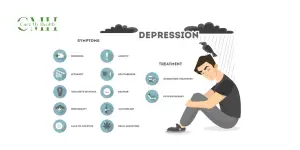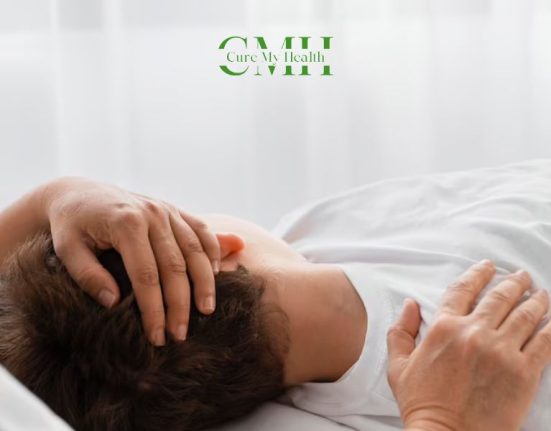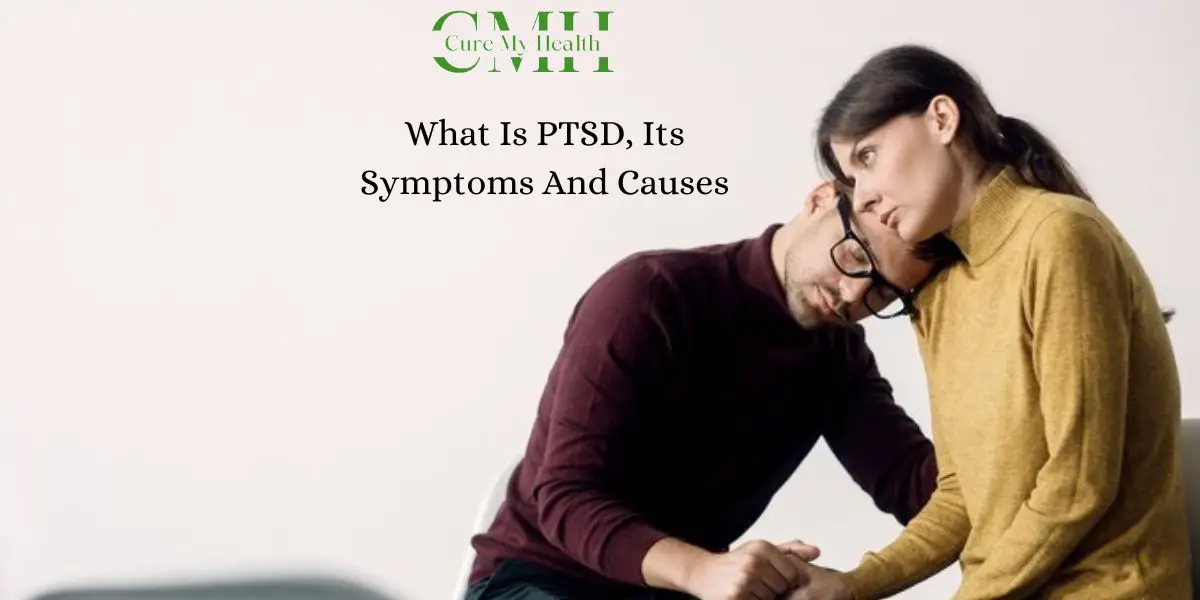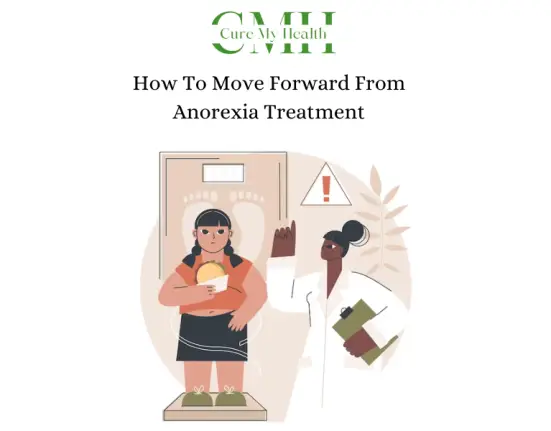Introduction
There are certain times in life when we have faced certain types of situations which become unforgettable for us even in the long run. So, basically, this thing is called PTSD or post-traumatic stress disorder.
PTSD, or post-traumatic stress disorder, is a mental health condition that can develop after experiencing or witnessing a traumatic event. Traumatic events can include natural disasters, accidents, physical or sexual assault, combat, or other life-threatening situations. Symptoms of PTSD can include flashbacks, nightmares, intense anxiety, avoidance of reminders of the trauma, hypervigilance, and other emotional or physical reactions.
PTSD can be a chronic condition that significantly affects a person’s daily life, relationships, and overall well-being. It is not a sign of weakness or a personal failing, but rather a natural response to a traumatic event. While PTSD can be a challenging condition to live with, effective treatments are available that can help manage symptoms and improve quality of life. Treatment options may include therapy, medication, or a combination of both. It is important for anyone experiencing symptoms of PTSD to seek professional help and support.
Posttraumatic Stress Disorder (PTSD) is a mental health disorder that can occur in individuals who have experienced or witnessed a traumatic event. Traumatic events can include physical or sexual assault, combat, accidents, natural disasters, or the sudden death of a loved one.

Symptoms of PTSD can include:
- Intrusive thoughts, memories, or nightmares about the traumatic event
- Avoidance of reminders of the trauma.
- Hyperarousal or heightened anxiety, including difficulty sleeping or concentrating.
- Negative changes in mood or thoughts, such as feeling guilty, blaming oneself, or losing interest in previously enjoyable activities.
PTSD can be diagnosed and treated by a mental health professional. Treatment may include therapy, medication, or a combination of both. Cognitive Behavioral Therapy (CBT) is a common type of therapy used to treat PTSD, which focuses on identifying and changing negative thought patterns and behaviors related to the trauma. Medications such as antidepressants and anti-anxiety drugs may also be prescribed to help manage symptoms.
Symptoms of PTSD can vary from person to person and may not appear immediately after the traumatic event. However, they can manifest weeks, months, or even years later. Symptoms can be categorized into four main groups: re-experiencing, avoidance, hyperarousal, and negative thoughts and mood.
Re-experiencing symptoms include flashbacks, nightmares, and intrusive thoughts that can make the individual feel like they are reliving the traumatic event. Avoidance symptoms can involve avoiding people, places, or situations that are associated with the traumatic event. Hyperarousal symptoms can involve being easily startled, having difficulty sleeping or concentrating, and feeling irritable or angry. Negative thoughts and mood symptoms can involve feeling hopeless, guilty, or ashamed, and can lead to loss of interest in previously enjoyable activities.
It is important for individuals with PTSD to seek help and support, as the disorder can significantly impact one’s quality of life and daily functioning.

Side effects of PTSD
PTSD, or post-traumatic stress disorder, can cause a wide range of physical and emotional symptoms. These symptoms can vary in severity and duration, and may include:
- Intrusive thoughts or memories of the traumatic event.
- Nightmares or flashbacks.
- Avoidance of situations or people that remind the person of the trauma.
- Hypervigilance or heightened startle response.
- Feelings of anxiety, irritability, anger, or guilt.
- Depression or suicidal thoughts.
- Substance abuse or other risky behaviours.
- Chronic pain or other physical symptoms.
- PTSD can also affect a person’s relationships, work, and overall quality of life. It is not uncommon for people with PTSD to experience difficulties with intimacy, communication, or trust.
It is important for anyone experiencing symptoms of PTSD to seek professional help and support. Effective treatments, such as therapy and medication, can help manage symptoms and improve quality of life. With proper care, many people with PTSD are able to recover and lead fulfilling lives.

Importance of Seeking Help in case of PTSD.
It is important for individuals with PTSD to seek help and support, as the disorder can significantly impact one’s quality of life and daily functioning. Treatment can be effective in reducing the intensity and frequency of symptoms and helping individuals live a more fulfilling life. If you or someone you know is experiencing symptoms of PTSD, it is important to seek help from a mental health professional. There are many resources available, including crisis hotlines and online support groups, that can provide additional support and information about PTSD and its treatment. Remember, seeking help is a sign of strength, and recovery is possible. PTSD, or post-traumatic stress disorder, is a mental health condition that can develop after experiencing or witnessing a traumatic event. While it is not always possible to completely “get rid of” PTSD, there are effective treatments and coping strategies that can help manage its symptoms and improve quality of life.
Treatment for PTSD
PTSD can be treated by a mental health professional, such as a psychiatrist, psychologist, or licensed therapist. Treatment typically involves psychotherapy, medication, or a combination of both.
Cognitive Behavioral Therapy (CBT) is a common type of therapy used to treat PTSD. It focuses on identifying and changing negative thought patterns and behaviors related to the trauma. CBT can help individuals learn coping skills and relaxation techniques to manage anxiety and other PTSD symptoms.
Eye Movement Desensitization and Reprocessing (EMDR) is another type of therapy that is often used to treat PTSD. It involves recalling the traumatic event while simultaneously engaging in a sensory experience, such as eye movements or tapping, to help the brain reprocess the traumatic memories and reduce their intensity.
Medications such as antidepressants and anti-anxiety drugs may also be prescribed to help manage symptoms of PTSD.

Here are some tips that may help:
Seek professional help: A mental health professional such as a psychologist, psychiatrist, or therapist can help you process the trauma and develop coping skills. They may recommend therapies such as cognitive behavioural therapy (CBT), exposure therapy, or eye movement desensitisation and reprocessing (EMDR).
Practice self-care: Self-care is an essential part of managing PTSD. Make sure to get enough sleep, exercise regularly, eat a healthy diet, and engage in activities that bring you joy and relaxation.
Connect with others: Isolation can worsen PTSD symptoms. Try to connect with supportive friends or family members, or join a support group for people with PTSD.
Avoid triggers: Certain sights, sounds, or situations may trigger flashbacks or other PTSD symptoms. Try to avoid or minimise exposure to these triggers.
Consider medication: Medication can help manage PTSD symptoms such as anxiety, depression, and insomnia. Talk to your doctor or psychiatrist about whether medication is right for you.
Conclusion
Remember, healing from PTSD takes time and effort. It is important to be patient and kind to yourself throughout the process. PTSD, or post-traumatic stress disorder, is a mental health condition that can develop after experiencing or witnessing a traumatic event. It is a natural response to trauma, and it can significantly affect a person’s daily life, relationships, and overall well-being. However, effective treatments are available that can help manage symptoms and improve quality of life. Seeking professional help and support is crucial for anyone experiencing symptoms of PTSD. Treatment options may include therapy, medication, or a combination of both. Self-care and connecting with supportive friends or family members can also help manage PTSD symptoms. It is important to remember that healing from PTSD takes time and effort. Patience, self-compassion, and perseverance are key in managing this condition. With proper treatment and support, many people with PTSD are able to lead fulfilling and meaningful lives.














